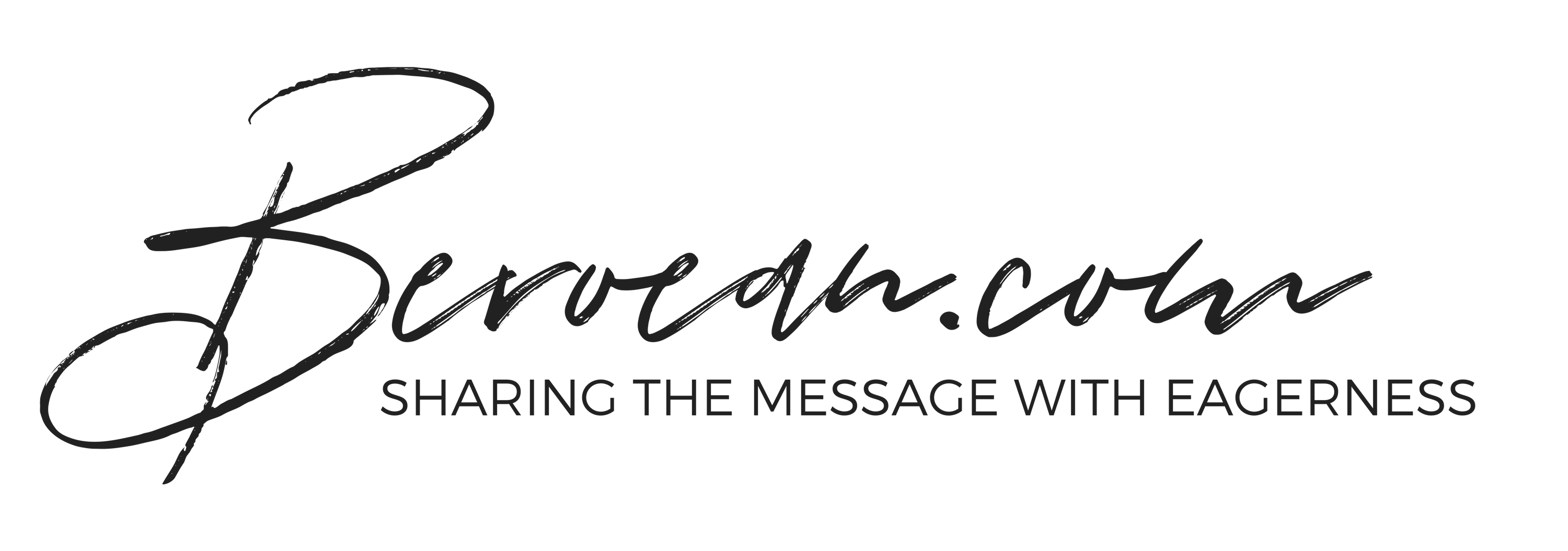Beroean Defends is a new type of Beroean article, where we plan to introduce some of the intellectual challenges laid against the Christian faith. In it, we’ll be attempting to explain both the motivation someone may have for asking the question, and a short introduction to the way Christians can answer them.
The articles can only begin to scratch the surface of these issues, so it’s not an attempt to belittle the issue by reducing it to something overly simple, but an attempt to tackle a bite-sized part of the issue to give you a foothold in the debate if you’ve never considered the issue before.
We realise that this sort of content isn’t for everyone, but we hope that you will find it useful to occasionally consider this different kind of question when studying your Bible.
An Issue of Purpose
The film Braveheart was well-received by critics and cinema-goers upon its release, but has taken criticism for its fast-and-loose handling of the historical facts surrounding its hero, William Wallace. The writers didn’t seem to mind, even going so far as to say: ‘we are creating something, we are in the business of storytelling, we are in the process of myth-making…’.[footnote]https://youtu.be/ojBwASARAzo?t=246 – the rest of the video documents the historical inaccuracies of Braveheart[/footnote] The idea that they were spinning myths certainly helps to explain why so few of the facts of the movie seem to have been checked before its release.
That said, not all of the differences will have been purely down to poor research: there is plenty of visual shorthand in use. The Scots of the 13th Century would not have painted their faces blue[footnote]This was a custom of the Picts, tribes living in Scotland 1,000 years prior[/footnote] nor worn kilts[footnote]Kilts were worn by Highlanders about 300 years later, and only became common dress in central Scotland in the 17th and 18th Centuries as the British Army adopted them as the dress code for its Scottish regiments[/footnote], but both are identifiably ‘Scottish’ features.
In a film involving battle scenes it’s important that the viewer is able to easily see what is going on. An accurate depiction of the battles, with the soldiers on both sides are wearing padded jackets and chainmail, would only make for confusing action scenes of brown and grey figures running into each other. Such a film would be instantly forgettable, and certainly not still being referenced nearly twenty-five years later. Therefore in Braveheart (as in almost all films set in the past), strict historical accuracy is sacrificed whenever it comes up against an issue of cinematography.
‘The Bible has a Religious Purpose’
Some critics accuse the Bible of being written the same way. It’s a religious book, and therefore must take liberties on historic facts and certain details in order to present its religious themes in just the same way as Braveheart took liberties for the sake of storytelling and cinema. But does that idea stand up to scrutiny?
[perfectpullquote size=”16″]…it’s a book we can trust to be portraying truth in all its genres, and so we can focus our attention on how to best understand that truth and apply it to our lives.[/perfectpullquote]The first problem with this is that the Bible is not a single religious book; it’s a compilation of books that are now collectively used as a religious text[footnote]For the sake of brevity, we’ll not discuss or define what makes a book ‘religious’, only address the assertion that a book that is used by a religion today must have been written with that purpose in mind.[/footnote] by Christians. But the idea of studying the circumstances of each of those books – who the author was; what they were recording; when and where they were writing; what their intentions and biases were; whether they were eyewitnesses of the events or not – is a legitimate exercise, and a form of literary criticism.
An Example: Luke
It would be impossible to conduct a study of all 66 books of the Bible in the span of this short article, but we can demonstrate how we would investigate one to provide an example of the process. We’ll start with Luke because the content of the book is the life of Jesus, and any investigation into the validity of the Christian faith should start with an investigation into its claims about the Christ it believes in. The rest either follows on from there or is made irrelevant.
The book of Luke is named after its author – it was originally a letter and so didn’t have a title the way that a book (in the traditional sense) does. The text doesn’t include his name, but the oldest copy that still exists calls it The Gospel According to Luke[footnote]It belongs to a library of texts called the Bodmer Papyri, Papyrus 75 is dated at ~200AD[/footnote], and all the ancient scholars considered him to be the author (or didn’t name one).[footnote]Those who explicitly attribute the text to Luke include Irenaeus, Tertullian, Clement of Alexandria and Origen, significant figures in the early Christian world[/footnote] It’s continued by Acts, which contains several passages where the author is travelling with the apostle Paul, so while Luke may or may not have met Jesus directly he did spend plenty of time meeting people who had. This means we can consider him a primary source. It also means that we know that the book was written around the middle of the 1st Century.
Luke helpfully states his purpose in his introduction: ‘Inasmuch as many have undertaken to compile a narrative of the things that have been accomplished among us, just as those who from the beginning were eyewitnesses and ministers of the word have delivered them to us, it seemed good to me also, having followed all things closely for some time past, to write an orderly account…’ (Luke 1:1-3) Pairing this with the introduction to Acts, this is intended to be an ‘orderly account’ of ‘all that Jesus began to do and teach’ (Acts 1:1) – in other words, a biography. This would be the genre of all four books Christians refer to as ‘gospels’.
Can We Trust It?
[perfectpullquote cite=”Luke 1:1-3″ align=”right” size=”15″]Inasmuch as many have undertaken to compile a narrative of the things that have been accomplished among us, just as those who from the beginning were eyewitnesses and ministers of the word have delivered them to us, it seemed good to me also, having followed all things closely for some time past, to write an orderly account…[/perfectpullquote]It is impossible to eradicate every doubt that could arise about a source, especially one from 2,000 years ago, but there are plenty of compelling reasons to trust the gospel of Luke. It’s a primary source, written within a generation of the events that he is recording, according to the standards of history of the Roman world. We should therefore understand that what is written is at least what the eyewitnesses whom Luke interviewed said about the life of Jesus. His method of study means that we can’t expect the book to be strictly chronological[footnote]We should note that no biography will be strictly chronological – it will explore themes in turn, constructing an overall narrative that is still readable and conveys the whole of the subject’s life without being like a series of diary entries[/footnote], but that it is meant to be taken as fact rather than fiction. This doesn’t mean that the reader has to believe that events such as miracles that are recorded could have actually occurred – that has to be a separate investigation.
We can only know from the text that Luke believed them and conveyed them as literal events in the life of Jesus. It’s a letter written by a Christian, to a Christian, and so will not answer every question that a sceptic will wish to ask. But that is not enough to make it untrustworthy; rather, since it is not motivated by the need for propaganda, this is a more trustworthy letter than one written by a Christian to a sceptic. It’s simply the results of an investigation.
What About the Rest?
There are many people who’ve completed this investigation for the other 65 books of the Bible, including those with strong biases for and against the Bible’s validity. However, as a general remark, a telling indicator of the Bible’s worth as a historical source is its use by historians of all religious persuasions.
Very few ancient nations’ official histories have survived as completely as the Old Testament has, and so even if you’re studying another ancient Middle-Eastern nation the Bible will provide a needed secondary resource for events that took place outside of that nation’s borders. Those historians will study it in much the same way we have: understanding the persuasions of the original authors, taking into account their national bias and their belief in God, and from that extracting the sequence of events that they will then square with the sources of their own object of study. In doing so, they’re able to better expose the nationalistic biases of the records they’re studying, improving their ability to reach an accurate description of events taking place in the distant past.
The New Testament isn’t as historically vital in this regard, as the Greeks and Romans had many more historians than earlier nations, and more of their records have survived to this day. But this does mean that the events of the New Testament can be verified with a wider cross-section of contemporary sources where necessary.
The outcome of all this is that as we study the Bible we should have confidence that it’s not a book that’s trying to hoodwink us into believing a dumbed-down history or a series of fairytales so that we subscribe to its religious agenda; it’s a book we can trust to be portraying truth in all its genres, and so we can focus our attention on how to best understand that truth and apply it to our lives.




Comments 1